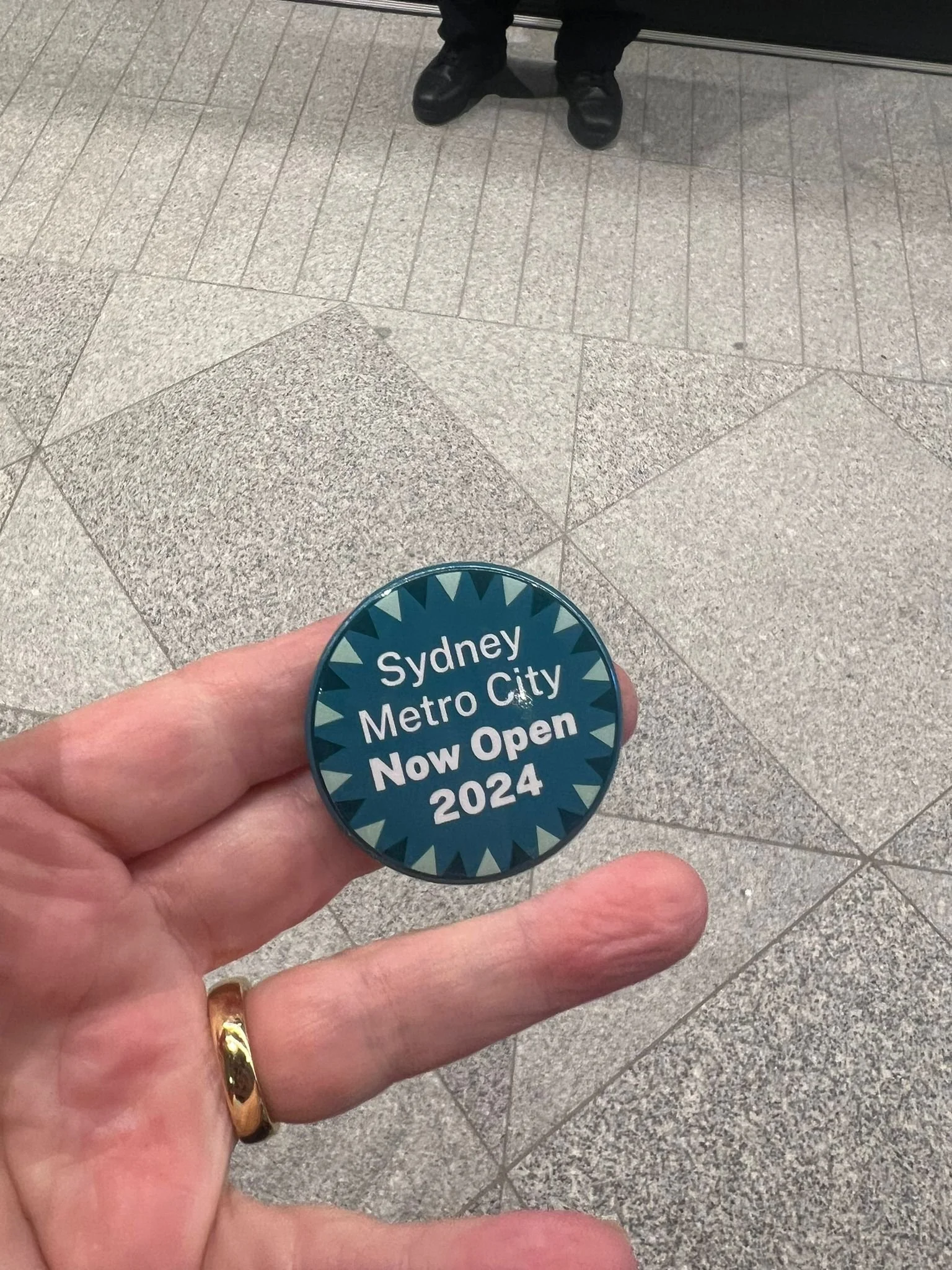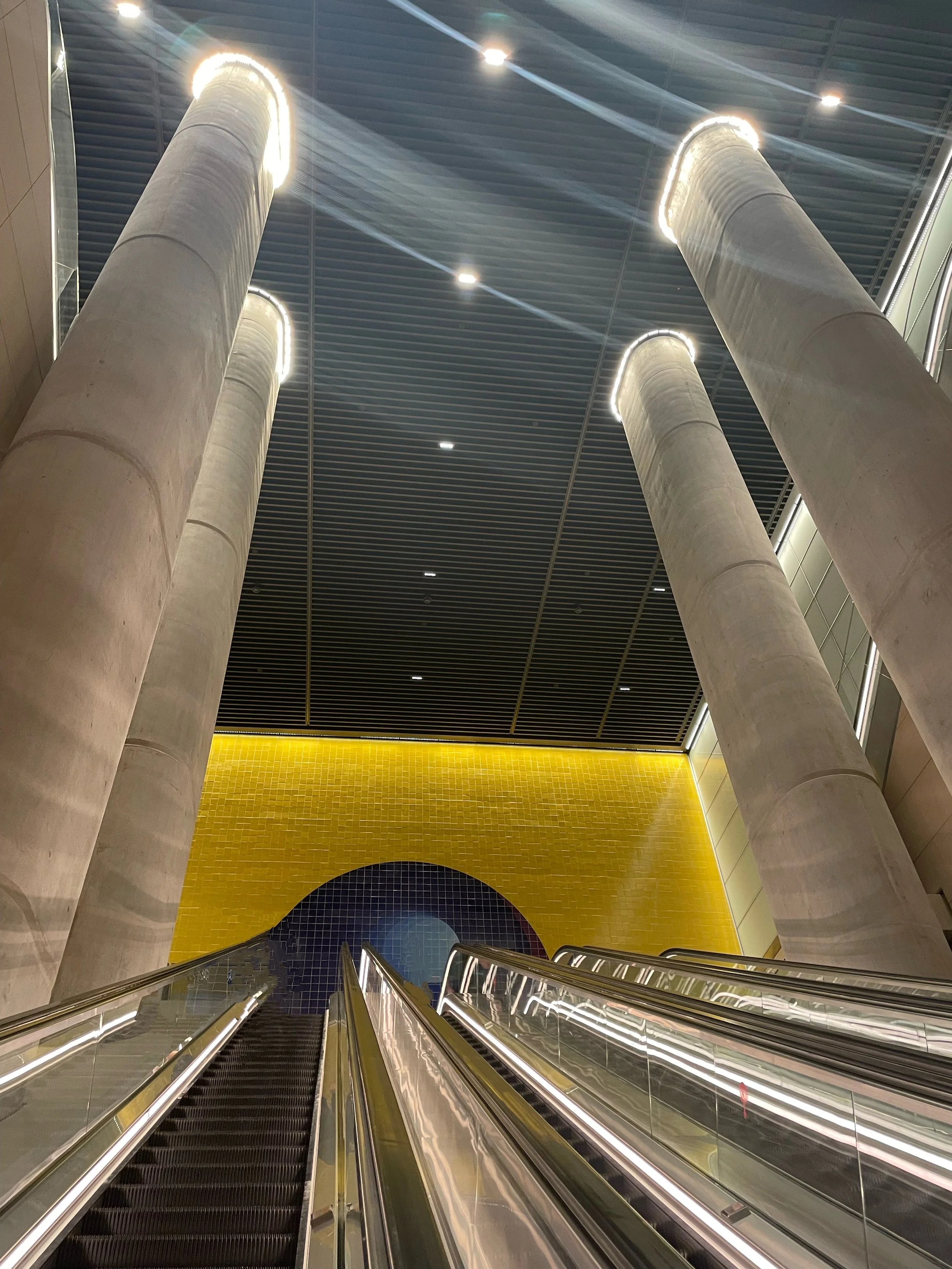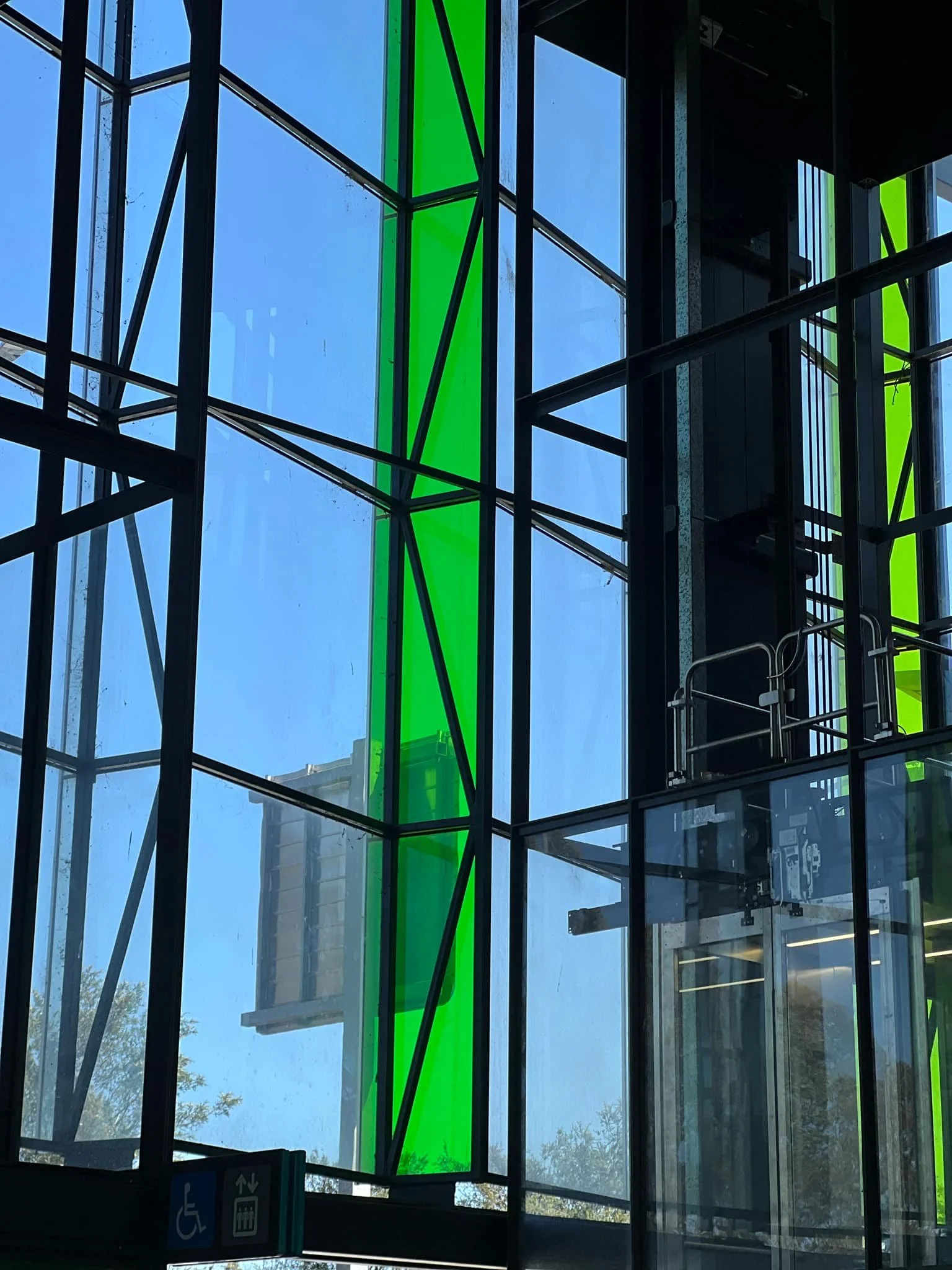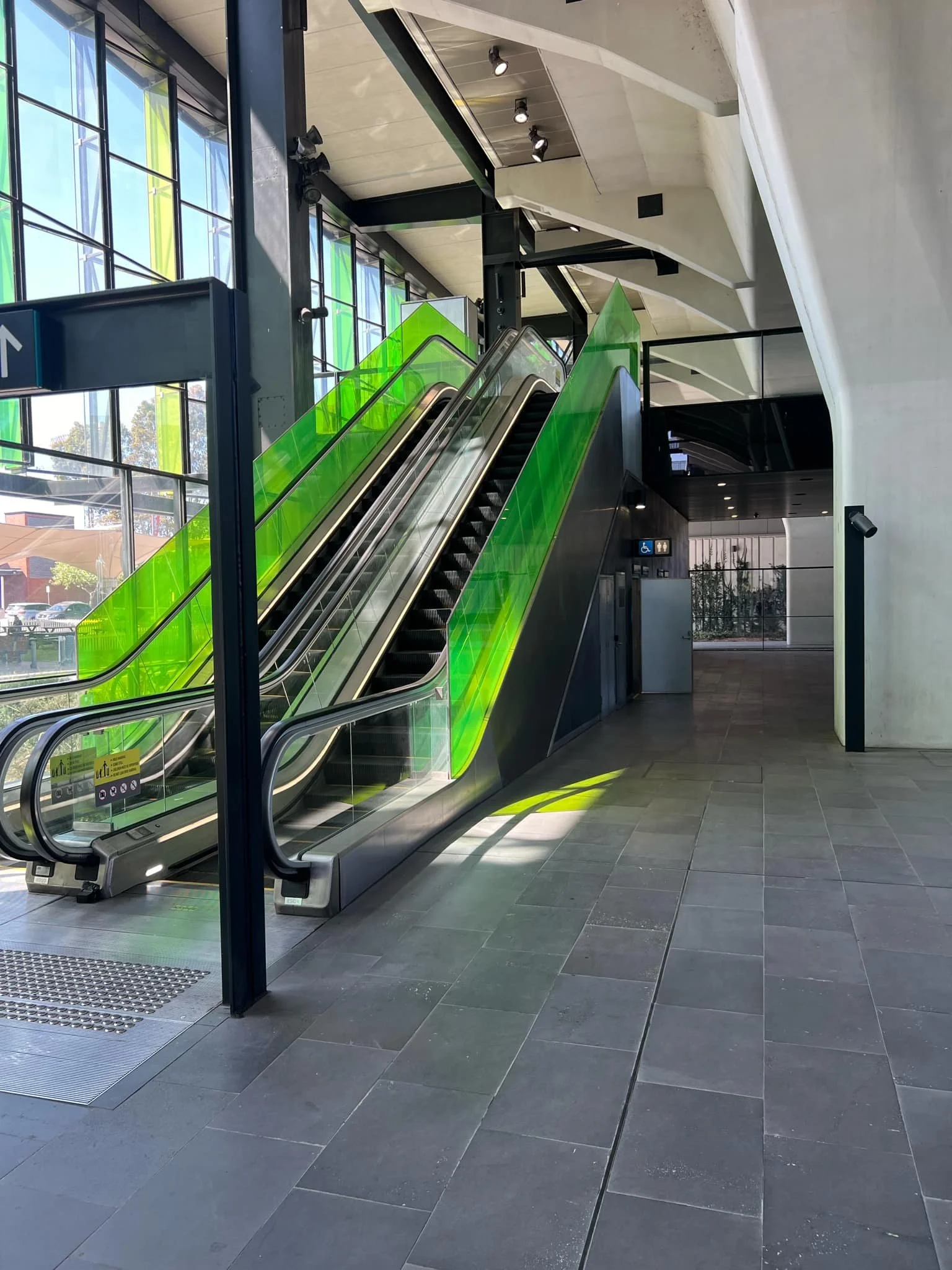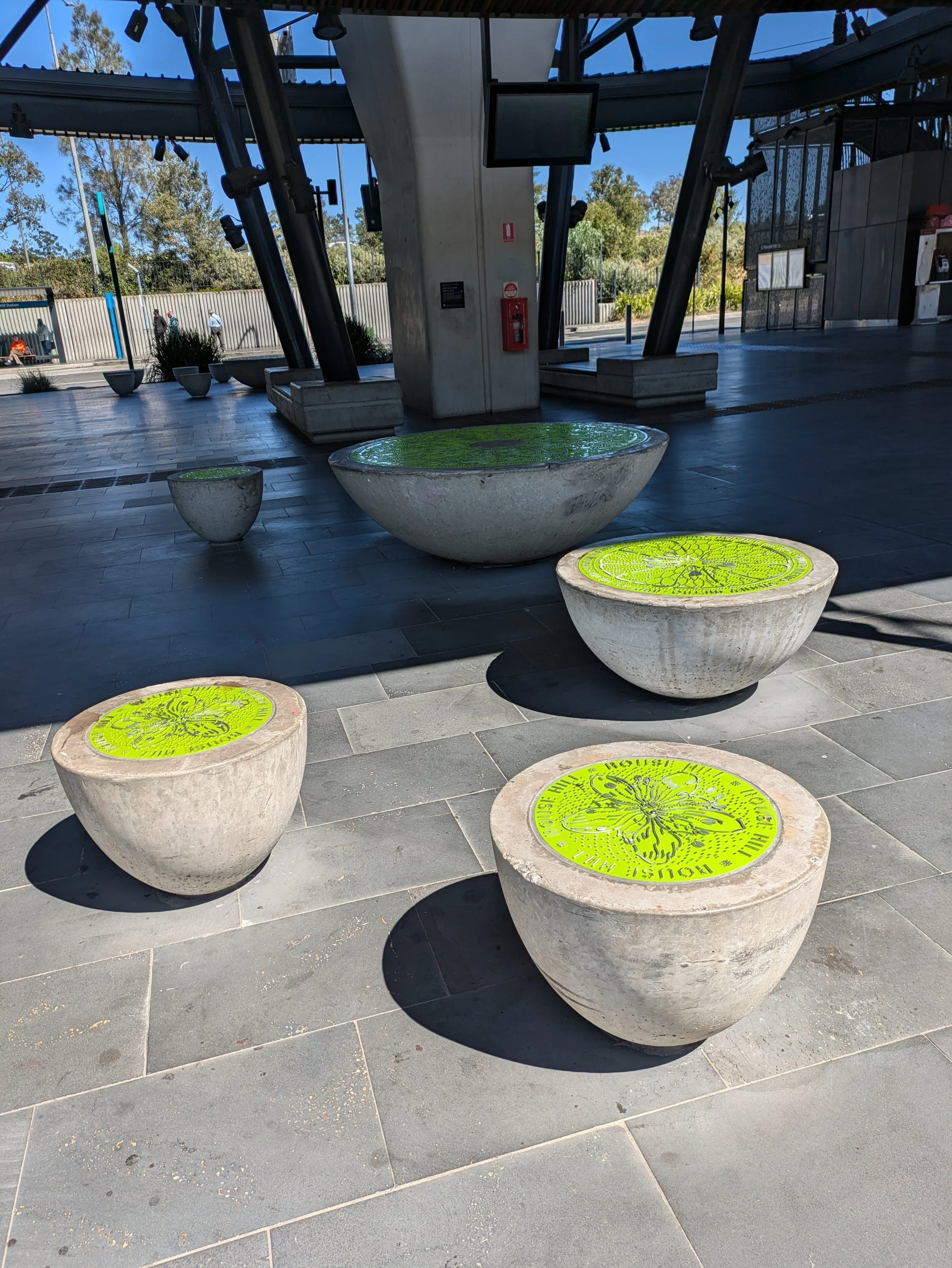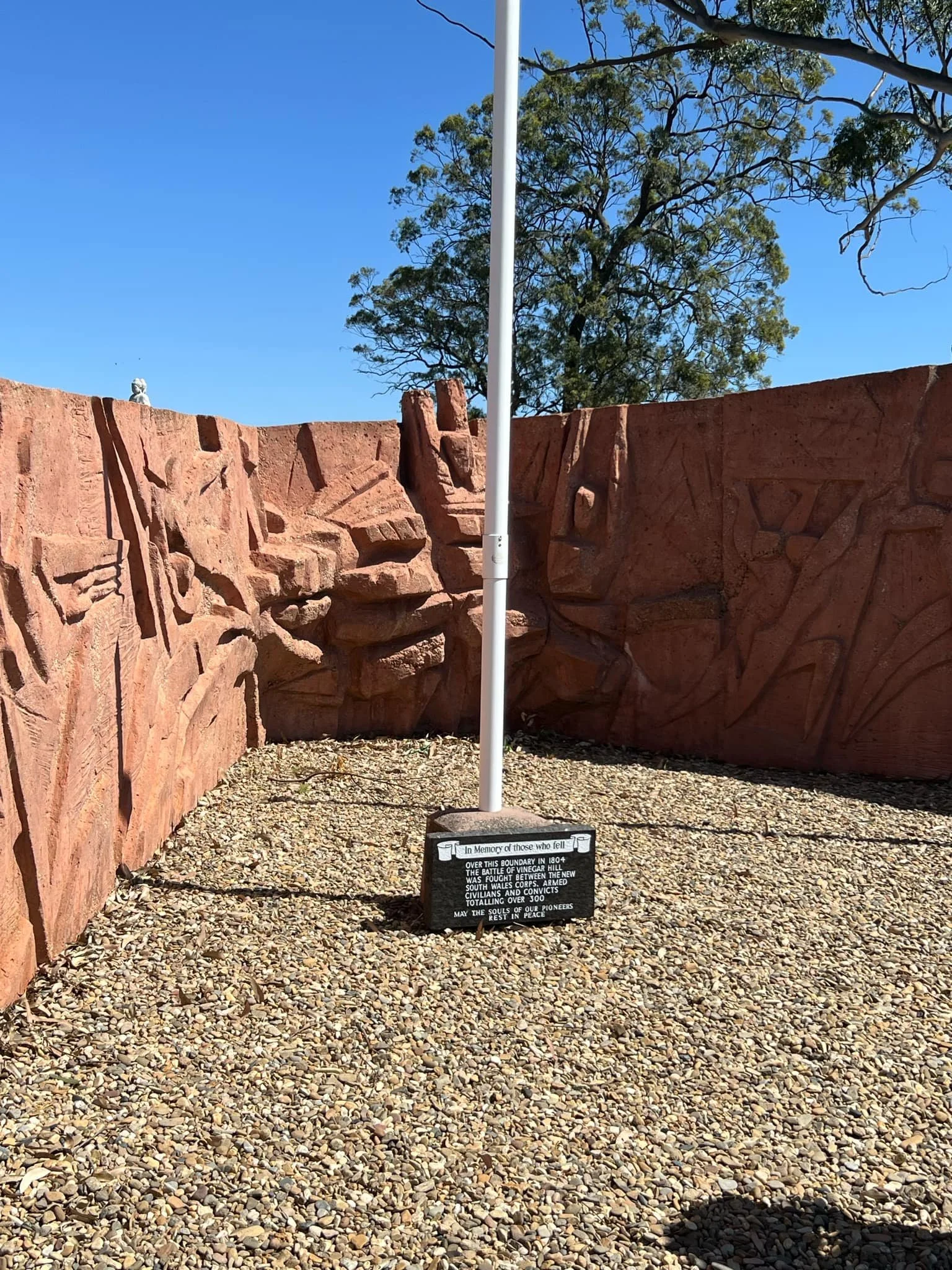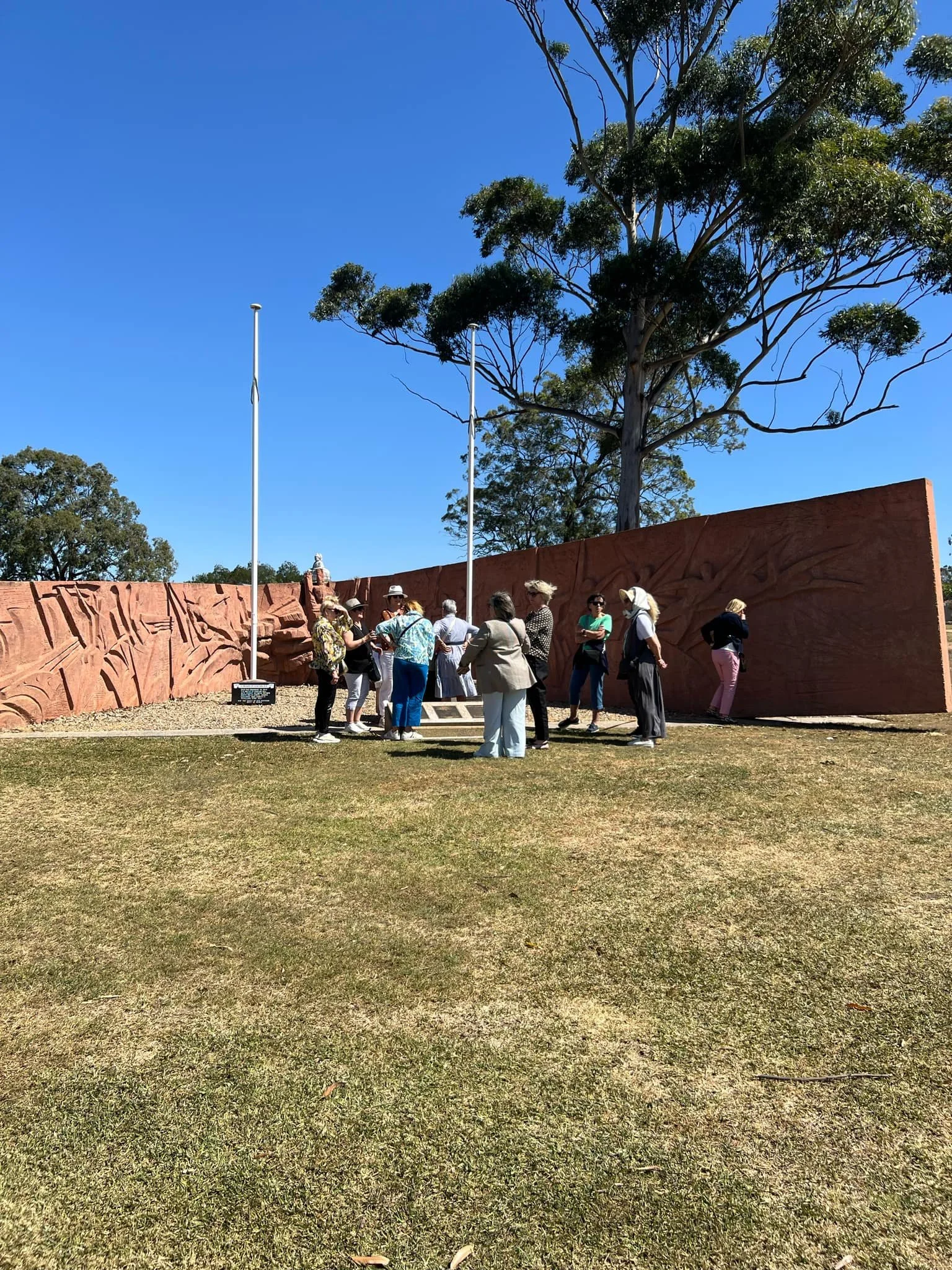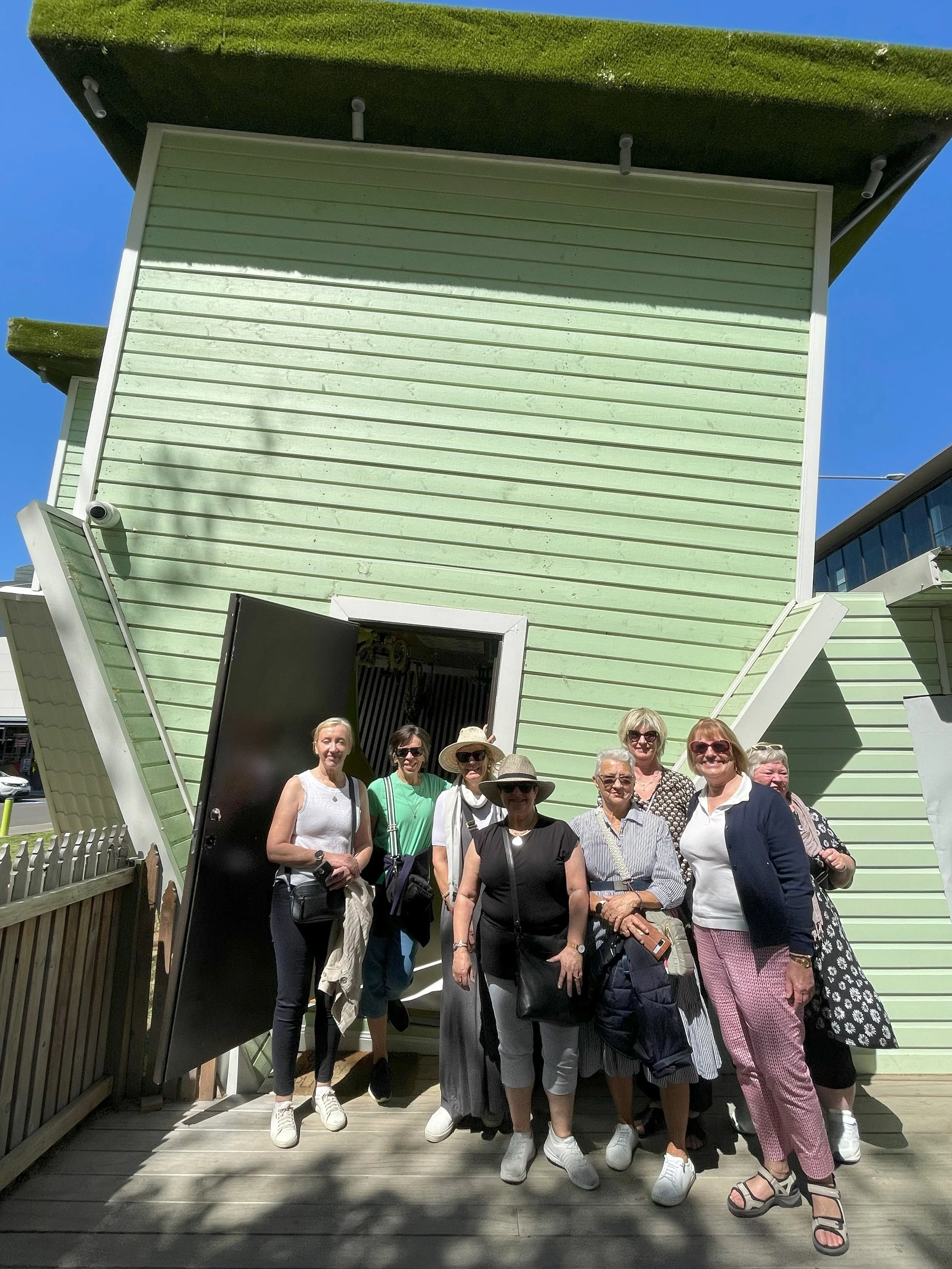Rouse Hill
Background
Before European settlement clans of the Darug Tribe lived along the banks of Caddies Creek because of the abundance of food. It was named for Richard Rouse, a free settler granted land. The first daily mail coach between Windsor and Sydney commenced in 1831 and a change of horses was made at the Rouse Hill Hotel. Rouse Hill house, which is open Sundays, was built by Richard from 1813-18 and was home to six generations of the family.
North West Sydney Metro
This was a trip about the journey and the destination, we travelled via the newly opened (19 August 2024) North West Sydney Metro. The first section of the Metro was completed May 2019. Some fun facts:
Before tunnel construction starts a smoking ceremony is held and a priest carries out a blessing and a statue of Saint Barbara, traditionally the patron saint of mining, (armourers, artillerymen, military engineers and others who work with explosives), now including tunnels is displayed. Because the underground workers look to Saint Barbara for protection, machinery underground are typically given female names.
Five Tunnel Boring Machines (TBMs) were used to deliver the tunnels between Chatswood and Sydenham for Sydney Metro City & Southwest. This included a specialised TBM for the section under Sydney Harbour because of the ground and rock conditions found at the bottom of the harbour.
1. Nancy - was named in honour of Australian aviation pioneer Nancy Bird Walton OBE, the first female pilot in the Commonwealth to carry passengers and the founder of the Australian Women Pilots’ Association.
2. Mum Shirl was named in honour of Colleen Shirley Perry, a Wiradjuri woman who dedicated her life to her community, raising 60 foster children and was involved in establishing legal, medical, housing and cultural services for the Aboriginal community.
3.Wendy was named after Wendy Schreiber, a volunteer at Bear Cottage – the only children’s hospice in NSW and long standing charity partner for the Sydney Metro tunnelling contractor John Holland CPB Ghella
4. Mabel was named after Mabel Newill, a matron at Royal Prince Alfred Hospital - she helped stop the spread of typhoid in Sydney, in the early 1900s.
5. Kathleen was named after Kathleen Butler, who worked on the Sydney Harbour Bridge – technical advisor to legendary engineer John Bradfield – a century ago.
About 93 per cent of the tunnelling was through sandstone as the five TBMs excavate the 15.5km tunnels.
There are 45 driverless trains on the route
Each of the stations is different - either with art work or sculptures
Starting deep underground at Gadigal station, we arrive at Rouse Hill station which is above ground. The station surrounds have a rather fetching shade of green as the theme.
Battle of Vinegar Hill Memorial
We cross the busy eight or ten lane Windsor Road up to the Castlebrook Memorial Park which houses the Battle of Vinegar Hill Memorial. The monument commemorates the Battle of Vinegar Hill in 1804 and also the pioneering spirit of the early non-indigenous settlers. The exact location of the battle is no longer known, but after an inquiry in 1982, it was agreed that a spot in the Castlebrook Lawn Cemetery would be marked by a memorial. The design submitted by Ivan Polak and Vladimir Sitta was chosen for its "bold and prominent sculptured idea, symbolising the foundation and growth of the nation which will be appreciated from a distance as well as close-up".
The Battle of Vinegar Hill is the name given to the clash between convicts and soldiers on Monday, March 5, 1804 following on from the Castle Hill uprising the night before. It was the first battle between Europeans on Australian soil. Convicts, mainly Irish, who were working on the government farm at Toongabbie joined with convicts and settlers in the district. They planned to march to Hawkesbury and team up with other rebels, then on to Parramatta and finally Sydney where they had planned to commandeer a ship home.
News of the uprising spread quickly to Sydney and Governor King dispatched soldiers of the NSW Regiment — later to be known as the infamous "Rum Corps" — who after a forced march faced the rebels at the place later known as Vinegar Hill. Vinegar Hill was named after a similar hill in Ireland, which was also the scene of battle in the 1798 United Irishmen's uprising. Some of the rebels at Sydney's Vinegar Hill were veterans of the Irish Vinegar Hill.
The convicts' leader, Philip Cunningham, was sent to negotiate with the commander of the soldiers under a flag of truce, but the soldiers disregarded the flag and fired on the rebels. The result was more of a massacre than a battle, with 11 rebels killed in the hunt that followed and a further nine court-martialled and hanged over the next few days. Cunningham, at first thought to have died during the skirmish, was hanged without trial on the steps of the government store. His grave is located at Windsor, in Sydney's west.
The Memorial Gardens were very peaceful. CB chatted to two gravediggers, digging a very deep plot for two graves, one on top of the other, for a funeral the following day. Its really hot and windy so we decide not to proceed with the planned walk to Caddies Creek.
House Down Under
We headed into the House Down Under, one of three upside down houses based in Melbourne, Gold Coast and Rouse Hill! Quite a few of us ventured inside and with the help of our guide, work out photo opportunities. 20 minutes of silly fun.
Off to lunch and then home.
